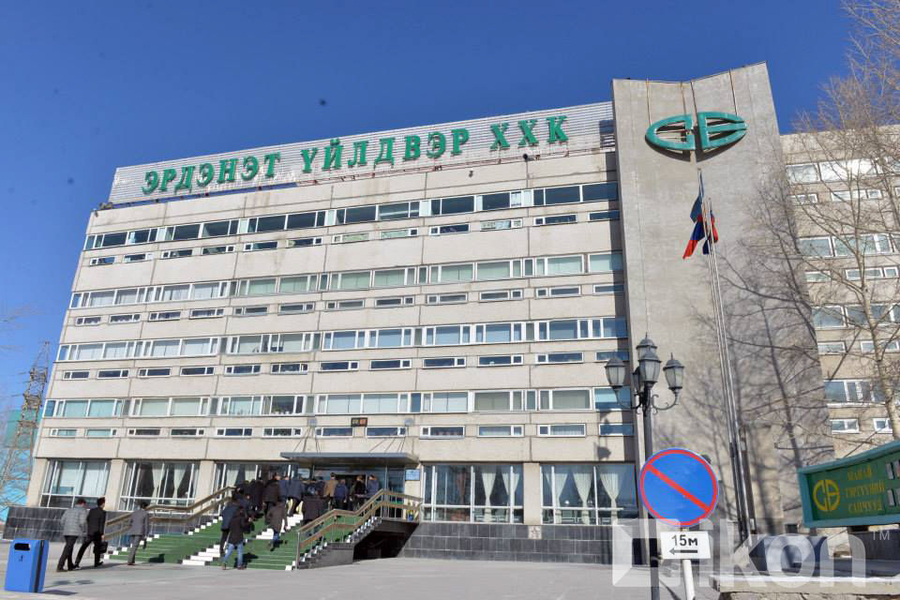Economy History of Democratic Mongolia: From Liberalism to Populism


Ch.Otgochuluu
Economist
During socialism, the price used to be stable in Mongolia. That is the reason why goods were named after its price, for instance, there were the nine-mungu cooking oil, tugrik-twenty bread, and tugrik-seventy bread.
Mongolia transitioned to democracy before the Soviet Union, thus it began facing food and essential product shortages from 1989. Because the Soviet Union imposed high taxes (and customs) on Mongolian exports and imports as a sanction. Due to that, foreign trade suffered enormously. The loans and aid inflows from the Soviet Union ceased which was a kick in the teeth for Mongolia. On top of that, tens of thousands of Russian soldiers who were based in the Mongolian People’s Republic purchased tons of food products before leaving the territory. Therefore, the famous twentieth decree was issued to devalue currency held by the Russian soldiers and to retain the rest of the food supply in Mongolia. That was the beginning of liberalism in Mongolia.
Following Poland, Mongolia launched the privatization initiative and handed out “Investment vouchers”, known as “blue and pink vouchers”, to the public.
But, the old-fashioned Mongolian People’s Revolutionary Party, which kept holding the liberalization back, won the election of 1992. The party’s inactive action hampered economic growth. For instance, the Cabinet of 1992 postponed the creation of Mongolian stock exchange, which would have enhanced the circulation of investment vouchers, for three years. The development of the stock market was neglected as well. The failure to complete the liberalization was the underlying reason for a decrease in the value of stocks held by the public. Furthermore, the government did not take any sufficient action to educate the public on the market economy and stocks. It is important to stress that Mongolia successfully privatized livestock to herders, and apartments to its residents. Also, the red passport was issued and foreign trade was liberalized (allowing small players to participate in the foreign trade). Within a short period, Mongolia overcame the food shortage and brought inflation down from 350 percent.
Unfortunately, the price of scarce commodities, such as electricity and water, was not liberalized hence those sectors still have not stood on their own feet.
The land serves as a tool to get rich for people who have access to sensitive information or have some sort of political power because it was not entirely privatized.
During 1990-1995 the exports were a few thousand times lower than current levels as it was only limited to a few commodities such as leather and cashmere. At the time, the government adopted an inadequate policy that heavily relied on foreign loans from Japan, the IMF, and the World Bank. Citizens who were outraged by such policy gave their votes to a reformative party in the 1996 parliamentary election. The Democratic Union Coalition won 50 seats in the parliament but was not the majority, hence they had to form a Coalition Cabinet.
From 1996 to 2000, decisive steps have been taken to liberalize the economy. As a result, the exports began to nudge up from 2000. The old-fashioned party won the next election as the Cabinet kept dissolving frequently, and a rumor that one of the leaders of democracy S.Zorig was “murdered by his political party members”. Yet again, the party hindered the reform.
In 2004, the two parties won almost equal seats. The economy was restored as foreign investments started flowing to the mining due to the adoption of a law that liberalized the mining sector in 1997. The economic recovery meant an end to liberalism and the start of the populist era.
In 2008 the inflation was ranging around 35 percent and put heavy pressure on households as the monthly household income was on average 312 thousand MNT. In connection with the global economic crisis, the price of raw materials such as cashmere and copper dropped down, the exports shrank, the price of crude oil dramatically went up, and our import expenses soared up.
By joining the IMF Stand-By Arrangement in 2009 and by signing the Oyu Tolgoi Investment Agreement, Mongolia was able to put out the fire.
However, we still keep picking a fight over the Oyu Tolgoi Investment Agreement if it was beneficial or detrimental for Mongolia.
How has Mongolia been doing in the last 30 years? According to the 2003 IMF working paper, the main drivers of economic growth was capital accumulation between 1990-2001. In other words, an increase in livestock drow economic growth, but education or employment had a little impact. In the 1980s, Mongolian productivity was negative similarly to other socialist countries. That means the economic growth was “driven forcefully” by raw materials and labor. Only from 1995, the total productivity became positive.
In the World Bank report, the Mongolian economy became heavily dependent on exports from 2007. The Mongolian economic growth is mainly driven by exports of raw materials such as gold and copper. The World Bank had warned us about the spread of corruption, and possible obstacles to economic growth including high-interest rates and road quality. The World Bank further recommended us to improve the investment environment so Mongolia could leverage the knowledge, experience, know-how, technology of other advanced countries.
Copper governance: From Socialist Erdenet to Capitalist Oyu Tolgoi
There is a concept called “Mining Nation”. If a mining sector makes up 10 percent of the economy, 10 percent of exports, and 10 percent of the state budget then a country is a “Mining Nation”. Let’s take a closer look. In recent years, the mining sector was responsible for 20-25 percent of the Mongolian economy, 90 percent of exports, and 30 percent of the state budget. Hence, Mongolia can be regarded as a “Mining Nation”.
During the socialist years, one of the major achievements was the Erdenet Mine Corporation which was established under the agreement with the former Soviet Union in the winter of 1973. At the time, the Soviet Union held 50 percent, and the rest was held by the Mongolian People’s Republic. It started its operations in 1978. At the developmental stage, the Erdenet Mine Corporation did not have to pay any taxes to the Mongolian government up until 1990, when they amended the agreement.
Under the new agreement, Mongolia will hold 51 percent whereas Russia will hold 49 percent of the shares, and also the tax will be imposed according to the Mongolian law. Later in 2016, the Erdenet Mining Corporation became a 100% national company in Mongolia.
It was unique that the Oyu Tolgoi Investment Agreement was signed during the capitalist era. But, the history of Oyu Tolgoi is deeply connected to Erdenet mine. In 1994, Erdenet Mining Corporation agreed to carry out an expedition and research to explore new copper reserves with the Magma Copper Company (MCC), a company incorporated in the US. In 1995, a joint venture company Erdenet-Magma was established thus the expedition of Canadian citizen S.Diakov and Mongolian scientist D.Garamjav began. However, the МСС independently acquired the exploration license as Erdenet Mining Corporation refused to finance the expedition.
In 1997, the multinational corporation ВНР Billiton bought the МСС but decided to cancel the exploration project in 1999 as they had not found any reserves that could generate profits. The Canadian Ivanhoe Mines Ltd bought the ВНР’s exploration license and relaunched the exploration project. Once more, the Oyu Tolgoi exploration project was canceled as Ivanhoe Mines Ltd failed to explore any reserves. It was the critical time when D.Garamjav had to choose the last drilling spot and, fortunately, he explored an abundant reserve at 590 meter-depth. That is how the Oyu Tolgoi project turned into a renowned project in the world.
The Ivanhoe Mines Ltd registered all the Oyu Tolgoi licenses under its name in 2003. In response, the government received 50 million USD from “Ivanhoe Mines Ltd” which was used to repay the Great Debt. The great debt is the loan amounting to 11 billion USD that was used to build Erdenet city and Erdenet Mining Corporation. Eventually, the Russian Federation wrote 95-98 percent of the debt and the Mongolian government had to pay 250-300 million USD back.
In 2006, the Ivanhoe Mines Ltd chose Rio Tinto, a multinational mining corporation, as a strategic partner. That year, the Parliament of Mongolia made amendments to the Minerals Law. Under the revised law, it became possible for Mongolia to acquire 34 percent of Oyu Tolgoi shares as stipulated in article five of the Law. Thereby, in 2009, the Oyu Tolgoi Agreement was signed by the two parties.
The agreement opened doors to rapid economic growth. The Oyu Tolgoi project played a vital role in increasing the GDP growth per capita by twice.
Instead of a conclusion
The economic growth and foreign trade expansion are the results of the commitment to a free-market economy by the two parties that held political power in turns.
However, we have sunken into populism and have been losing our opportunity to make the most out of natural resources while the prices are still high in the global market.
Moreover, the Mongolian government failed or was hesitant to carry out reforms that are necessary for creating a free market economy.
Then, what should our priority be in the next 30 years? First, an extremely pragmatic policy is required to expand the economy. Second, investment is needed in education and healthcare to reduce inequality. It is quite important to improve the quality and competitiveness of those sectors to bring it closer to the global average. Third, Mongolia must become a nation that is capable of attracting foreign investment instead of relying on foreign loans or aid. Mongolia can stabilize the currency rate, create more jobs, ingrain innovation and know-how through foreign direct investments. That way we can improve productivity, the biggest challenge. To achieve that we need to make the mining sector as the main source of income through extensive support. Let’s increase the exports, and diversify our economy through income derived from the mining sector.